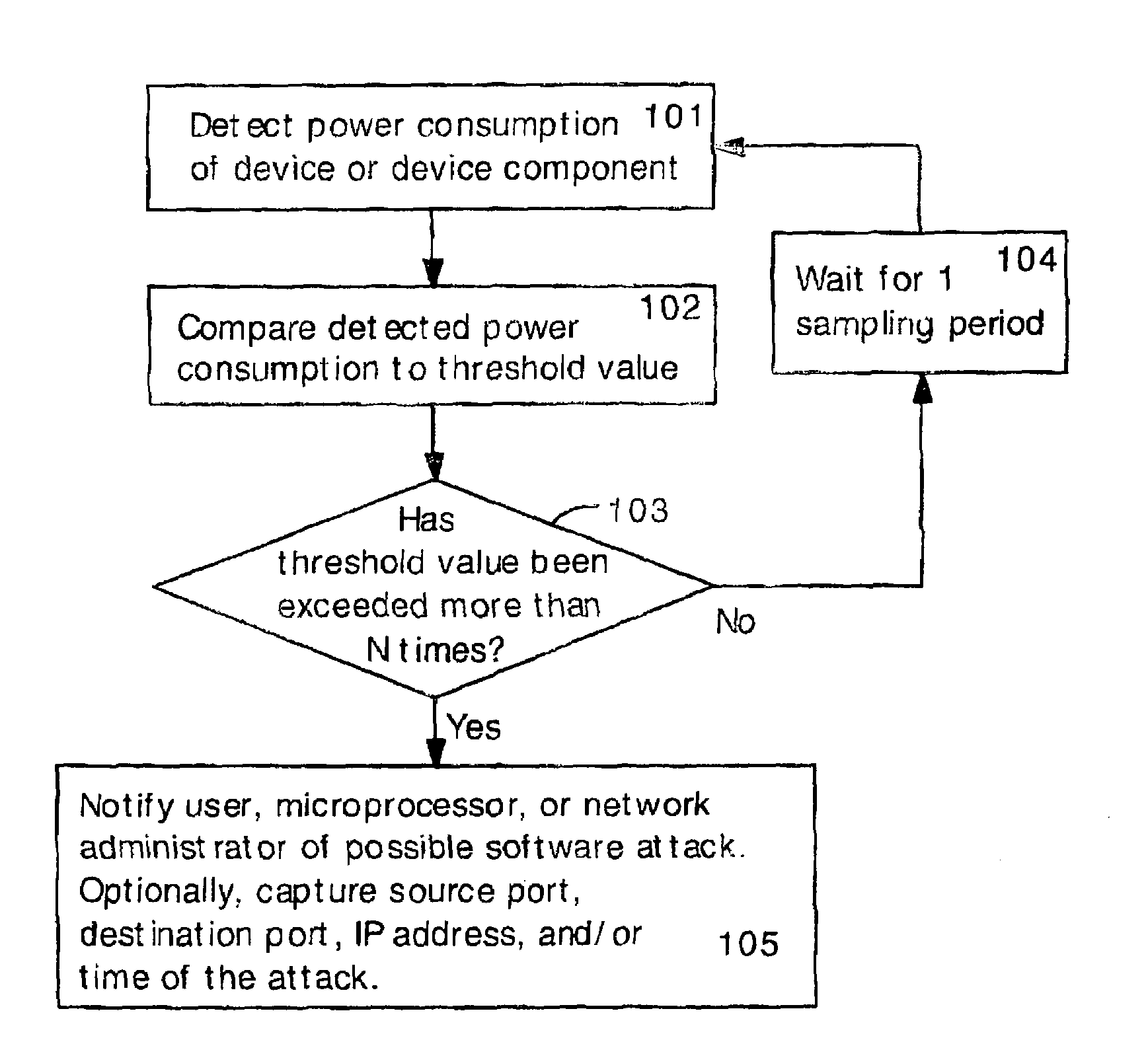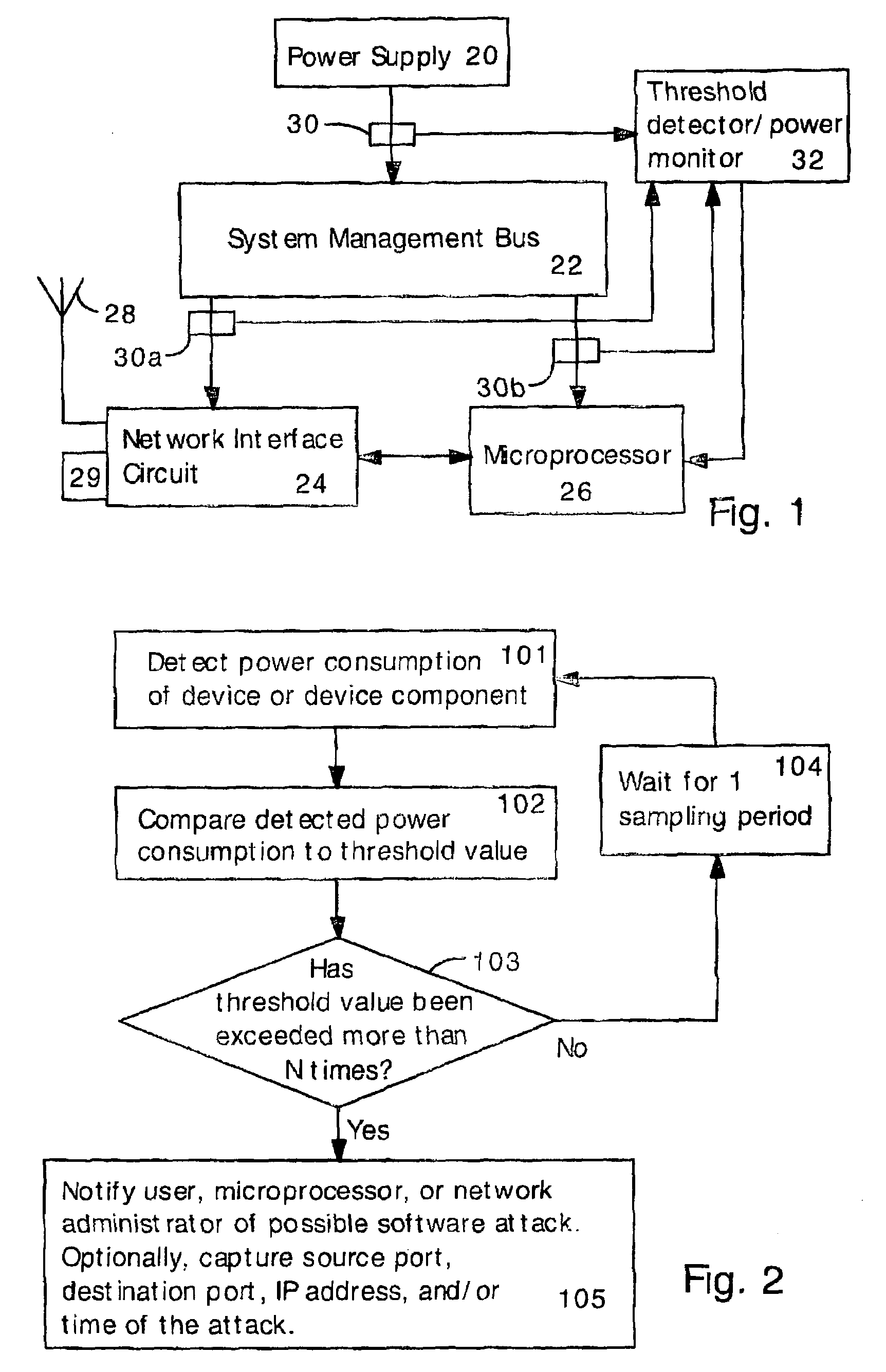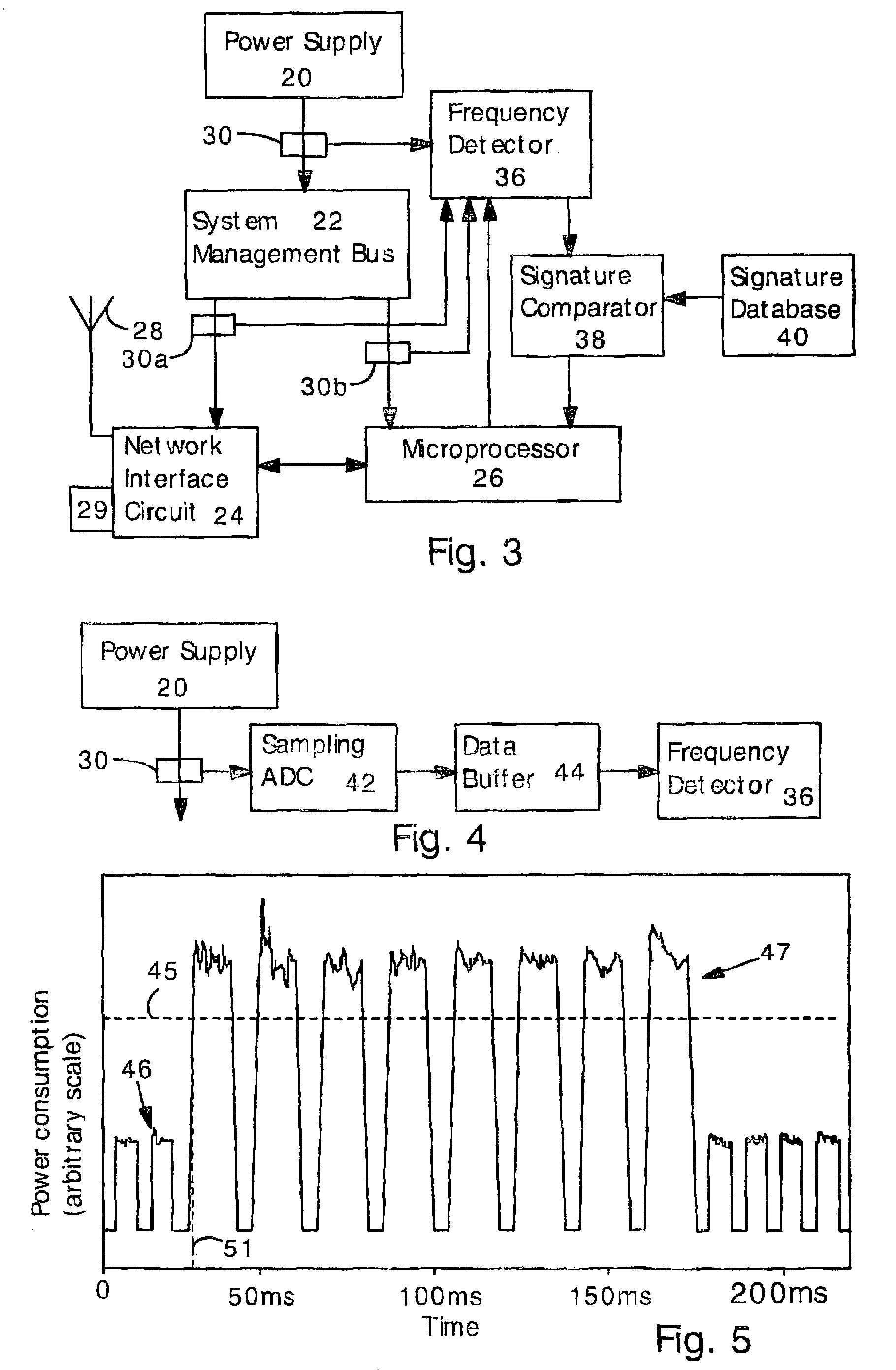Detecting software attacks by monitoring electric power consumption patterns
a technology of power consumption pattern and detection of software attacks, applied in the direction of power supply for data processing, unauthorized memory use protection, instruments, etc., can solve the problems of undesired software operating and undesired software being present, and achieve the effect of eliminating short duration and smoothing power consumption signatures
- Summary
- Abstract
- Description
- Claims
- Application Information
AI Technical Summary
Benefits of technology
Problems solved by technology
Method used
Image
Examples
first embodiment
[0043]In the present invention, electrical power consumption is monitored for patterns characteristic of software attacks. The present inventors have discovered that worms, viruses and other forms of software attacks can be detected by unusually high power consumption. In the invention, power consumption is periodically compared to a threshold level indicative of a software attack. If power consumption is higher than the threshold for a prolonged period, then the user or microprocessor can be alerted that a software attack is probably occurring. Other, more detailed and powerful (and power consuming) antivirus tools can then be applied, if desired.
[0044]The present inventors have discovered that downloading or execution of software results in power consumption having frequency components indicative of the software. In a second aspect of the present invention, a power or current consumption signal is converted to the frequency domain, and the most powerful frequency components are id...
second embodiment
[0077]FIG. 3 illustrates an electronic device capable of detecting undesired software according to the present invention employing frequency detection. The device includes the power supply 20, the system management bus 22, the network interface circuit (NIC) 24, the microprocessor 26, the antenna 28, the network connector (e.g., Ethernet connector) 29, and sensors 3030a 30b.
[0078]Sensors 30a 30b are optional and may be eliminated, so that only sensor 30 is present. Alternatively, sensor 30 can be eliminated so that only sensors 30a 30b are present. Alternatively, only a single sensor 30a or 30b is included. As noted above, sensors 3030a 30b can be any kind of power or current monitoring sensor.
[0079]The electronic device includes a frequency detector 36, a signature comparator 38, and a signature database 40. The frequency detector 36 determines the highest amplitude frequency components in signals received from the sensors 3030a 30b. The signature comparator 38 receives data from ...
third embodiment
[0127]FIG. 9 illustrates an electronic device capable of detecting undesired software according to the present invention employing power signature detection. The device includes the power supply 20, the system management bus 22, the network interface circuit (NIC) 24, the microprocessor 26, the antenna 28, the network connector (e.g., Ethernet connector) 29, and sensors 3030a 30b. A power signature detector 60 receives the power consumption signal from the sensors 3030a 30b and produces a power signature that ignores very short duration variations and patterns in power consumption. In some embodiments, the power signature detector 60 can function as a low-pass filter, or as a peak detector with a buffer capacity. Also, although not shown, the device can include a buffer (analogous to buffer 44) for storing portions of the power consumption signature, so that the signature can be analyzed retroactively.
[0128]A power signature comparator 38b and power signature database 40b are also p...
PUM
 Login to View More
Login to View More Abstract
Description
Claims
Application Information
 Login to View More
Login to View More - R&D
- Intellectual Property
- Life Sciences
- Materials
- Tech Scout
- Unparalleled Data Quality
- Higher Quality Content
- 60% Fewer Hallucinations
Browse by: Latest US Patents, China's latest patents, Technical Efficacy Thesaurus, Application Domain, Technology Topic, Popular Technical Reports.
© 2025 PatSnap. All rights reserved.Legal|Privacy policy|Modern Slavery Act Transparency Statement|Sitemap|About US| Contact US: help@patsnap.com



